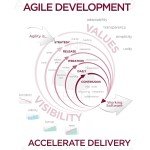-
Agile

The HVT Analysis Approach
In my career it took me some time to understand and be convinced of the importance of doing analysis. I…
Read More » -
Enterprise Java

How to do Continuous Integration with Java 8, NetBeans Platform 8, Jenkins, Jacoco and Sonar
Intro Java 8 is there, the promised revolution is finally released, and I am sure that a lot of you…
Read More » -
Software Development

Redundancy in Domain and Database Design
Introduction Design a domain can be a real challenge. A lot of bad practices can easily bring you to a…
Read More » -
Core Java

Integrate AspectJ with NetBeans Platform Development
Are you developing your project using the NetBeans Platform? Are you willing to use AspectJ to use AOP? You do…
Read More » -
Software Development

Multilayered Architecture (5) – The Presentation Layer
Introduction The final piece of a MultiLayered Architecture, in term of development design and dependencies is the Presentation Layer. It has…
Read More » -
Software Development

How design for testability can improve test automation capability
Introduction Testability refers to the capability of testing something. When this something is an IT solution, the most suited way…
Read More » -
Software Development

Multilayered Architecture (4) – The Infrastructure Layer
Introduction What is Infrastructure? If we think at a building, Infrastructure is what brings light and water. You can build…
Read More » -
Software Development

Multilayered Architecture (3) – The Application Layer
Introduction As Business Documents are considered the input for the Domain Layer, System Requirement Specifications are the main input document…
Read More » -
Software Development

Code Refactoring vs Architecture Refactoring
Introduction Everybody knows the meaning of Refactoring; the base of Agile Programming, and the best way to continuously increase the code…
Read More »
- 1
- 2




